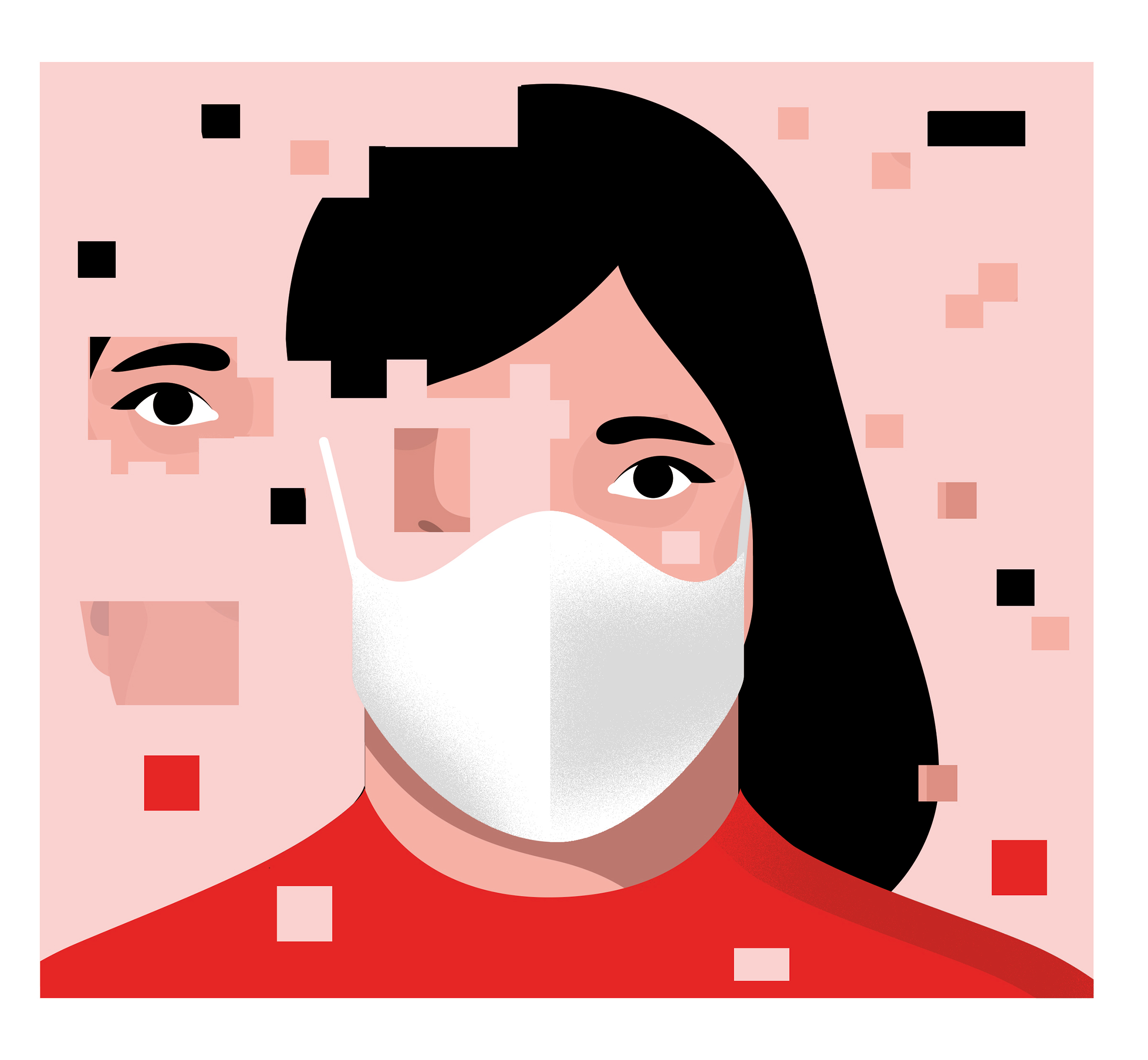
I miss smiling. I don’t miss it in the inspirational poster “the whole world smiles with me” way. I don’t miss it, as another poster says, because I can no longer “intimidate those who wish to destroy me.” I don’t miss it because “happiness looks gorgeous on me,” although I did put in three very formative years of hard time in the orthodontia trenches–20 months of braces and six retainers–so it looks at least marginally better than it used to.
I miss smiling because it’s one of the handiest utensils in the communication drawer and my mask has locked it away. Yes, it’s just a facial expression: a deployment of the zygomaticus muscles, sometimes authentic, sometimes a placeholder because the real emotion we’re feeling is best not expressed. But as humans, we learn at the age of approximately 42 days that smiling is a useful way of getting people to feel good about themselves and therefore us. (The “world smiles with you” thing actually works–for babies.)
We continue to refine the way we use that smile to communicate information–from “you’re here!” to “you’re cute” to “you’re not meant to take that seriously, although you also kind of are”–until we no longer have teeth. And now, suddenly, those skills, all that practice, are useless. We have lost our favorite communication gizmo just when we need more ways to connect than ever.
Trying to interact with other humans without being able to smile is the facial equivalent of communicating via text message; it’s easy to be misunderstood. Your expression and words lack context. People wonder: Are you wincing at me? Are you grinding your jaw? Do you just have a lot of crow’s-feet? Was what you said an insult or a joke?
According to Paula Niedenthal, a psychologist who heads up the Niedenthal Emotions Lab at the University of Wisconsin–Madison and has studied facial expression extensively, there are three types of smiles: those that express pleasure at a reward or surprise, like when you get to see your friends in person after a prolonged separation (soon, please); those that convey a desire to be friendly, or at least non-threatening, which she calls smiles of affiliation; and those that show dominance, like the one Dirty Harry gives when he asks a certain punk if he feels lucky.
Her studies have shown that it’s harder to tell the difference between affiliative smiles and dominant ones if you can’t see the lower half of the face. In those situations, people have to rely on other clues. She gives the example of walking a dog that suddenly barks at a passerby. A quick look at an unmasked person’s face will confirm whether the passerby is smiling because he thinks he’s much better with his dog than you are or smiling because his dog is also occasionally silly. Behind a mask, this distinction is not so clear.
Niedenthal predicts that as mask use stretches on, people may rely more on the context of the situation to tell them how to interpret an interaction. “They will imagine that the context confers a reaction that is obvious, which of course will get everybody into a lot of trouble, because people in our culture respond with high variability to the same context,” she says.
I have tried to compensate for the communication gap by enhancing my other gestures. Upon approaching strangers in the street, I want to let them know that I am harmless and wish them well. In hard times, this message feels particularly urgent. Not being able to smile at them has forced me to wave or do a weird fighter-pilot-style salute. If I’m pulling aside to let them pass and can no longer offer an encouraging “you first” smile, I am reduced to airport-marshal gesticulations, which are about as effective as talking more loudly to someone whose language you don’t speak.
But it’s not just the recipient who gains from a grin. Smiling affects the smiler too. Studies have shown that it enhances the mood that produced the expression and helps us recall happier times. “Facial expression is not just out-put from the brain but also feeds back to the brain and has some consequences for subjective experience,” says Niedenthal. “There is good evidence that smiling naturally has some effect on your ambient emotional state.” In other words, masks may be making us more morose.
It almost never helps a situation to tell people to smile, so I won’t, but I’m going to keep beaming, even if it can’t be seen and sometimes is not entirely authentic. A fake smile, after all, is often given with good intentions, just as a mask is sometimes worn not to hide but to protect.
More Must-Reads from TIME
- Donald Trump Is TIME's 2024 Person of the Year
- Why We Chose Trump as Person of the Year
- Is Intermittent Fasting Good or Bad for You?
- The 100 Must-Read Books of 2024
- The 20 Best Christmas TV Episodes
- Column: If Optimism Feels Ridiculous Now, Try Hope
- The Future of Climate Action Is Trade Policy
- Merle Bombardieri Is Helping People Make the Baby Decision
Contact us at letters@time.com